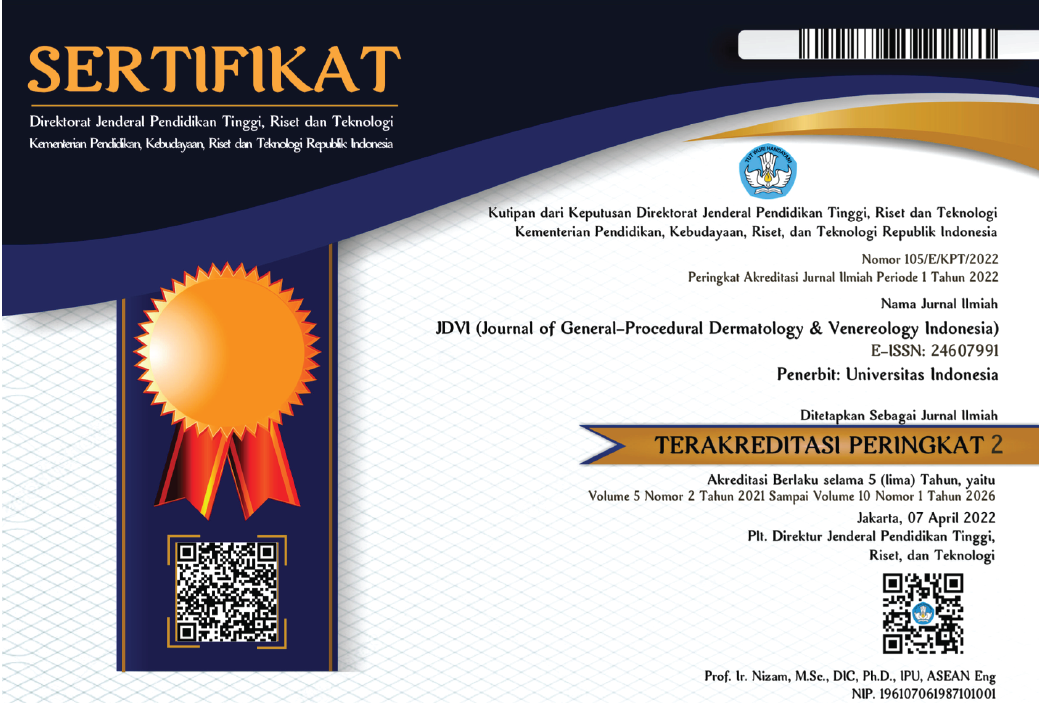Abstract
Background: Leprosy is a chronic granulomatous infectious disease that primarily involves the skin and peripheral nerve and is caused by Mycobacterium leprae. Clinical features may vary depending on the patient’s immune response. Reversal reaction due to increased immunity is common after treatment in patients with borderline leprosy. Dapsone hypersensitivity syndrome (DHS) is an adverse effect from dapsone therapy that may occur in 5-6 weeks to 6 months after initial treatment.
Case Illustration: A 47-year-old female complained of a spreading red patches on the skin of her trunk and extremities for three weeks duration. She also felt itchiness and tight sensation of rash. She experienced fever, pain, and numb lesions. She was diagnosed with leprosy and already had her sixth Multi Drug Therapy-Multi Bacillary (MDT-MB) regimen. From physical examination, on thoracic, abdominal, and extremities regions, multiple erythematous macules with hypoesthesia, sharply marginated ranging from size 3 to 5 cm along with discrete erythematous papules were found. Bacteriology index was zero. Patient was diagnosed with borderline leprosy with reversal reaction. After treated with prednisone, the patches became better, but the rash was still progressive. The rash had gotten significantly better after dapsone therapy was discontinued.
Discussion: Borderline leprosy is immunologically unstable and can be complicated by reversal reactions. Reversal reaction is due to increased immunity and usually occurs after MDT treatment.
Conclusion: Reversal reaction got better with prednisone, while DHS was significantly improved after stopping dapsone therapy. Drug patch test should be conducted after the lesion resolves in order to establish DHS.
Recommended Citation
Liuwan, Chesia Christiani; Denisa, Medhi; and Listiawan, M Yulianto
(2019)
"Dapsone hypersensitivity syndrome overlaps reversal reaction in leprosy patient,"
Journal of General - Procedural Dermatology and Venereology Indonesia: Vol. 3:
Iss.
2, Article 2.
DOI: 10.19100/jdvi.v3i2.119
Available at:
https://scholarhub.ui.ac.id/jdvi/vol3/iss2/2
Included in
Dermatology Commons, Integumentary System Commons, Skin and Connective Tissue Diseases Commons






























